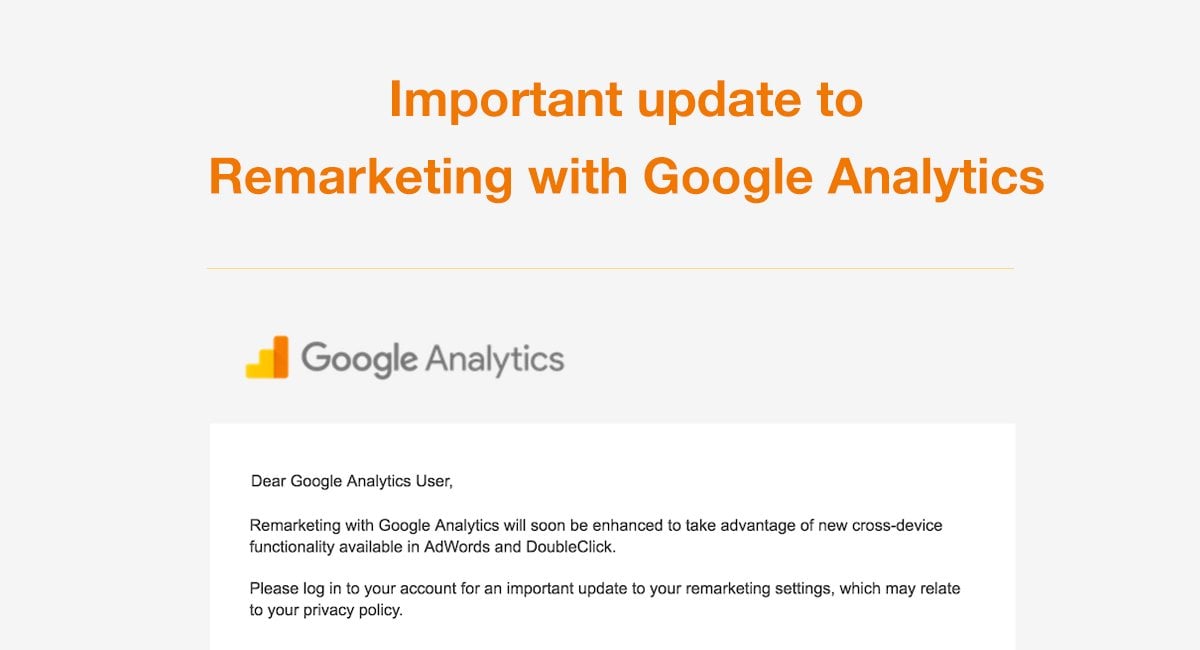Efficient Methods for Remarketing In Google Analytics
Efficient Methods for Remarketing In Google Analytics
Blog Article
Unlocking Remarketing in Google Analytics: Increase Your Conversion Fees
In the digital landscape, leveraging remarketing abilities within Google Analytics can dramatically influence a service's conversion rates. By sharpening in on previous interactions with site site visitors, customized promotions can reignite interest and drive conversions. What Is “Remarketing” In Google Analytics?. The art depends on critical target market division and crafting engaging advertisement content that reverberates with customers. Nevertheless, the real game-changer originates from thorough evaluation and constant optimization of remarketing strategies. The secret to opening the full possibility of remarketing lies in understanding user habits and rate of interests to make best use of ROI.
Understanding Remarketing in Google Analytics
Remarketing in Google Analytics is a powerful device that permits companies to target and re-engage with users who have previously communicated with their internet site or app. By using this feature, companies can show targeted ads to customers as they surf the internet or utilize various other applications, reminding them of services or items they formerly checked out. This calculated method helps services stay top-of-mind with possible consumers, enhancing the possibility of conversion.
One key element of remarketing in Google Analytics is the ability to create personalized target market checklists based on details requirements such as pages checked out, actions handled the site, or market information. These listings allow services to tailor their remarketing projects to various sections of their target market, guaranteeing that the appropriate message reaches the appropriate people at the correct time.
Furthermore, remarketing in Google Analytics supplies beneficial insights right into customer habits and the performance of advertising projects. By tracking user interactions and conversions, organizations can refine their methods to boost targeting and take full advantage of ROI. Overall, comprehending the details of remarketing in Google Analytics is vital for organizations looking to improve conversion prices and drive development.
Establishing Remarketing Listings
When applying remarketing strategies in Google Analytics, the preliminary action involves producing customized audience listings tailored to certain standards. These lists are necessary for targeting specific groups of users who have connected with your site in a certain means. To establish remarketing checklists effectively, navigate to the Admin area of Google Analytics, then pick the wanted account and property (What Is “Remarketing” In Google Analytics?). From there, click Target market Definitions and select Audiences. Next off, click the +New Target market switch and select the kind of target market you intend to develop, such as customers that saw a details web page or finished a specific action. You can even more fine-tune your audience by including certain conditions and parameters to guarantee you reach the appropriate individuals with your remarketing campaigns.

Crafting Compelling Remarketing Ads
Crafting compelling remarketing ads includes purposefully creating messages that resonate with your target audience and drive them to take wanted actions. Personalization is vital in remarketing ads, so think about utilizing vibrant advertisements that show items or solutions that a user has previously checked out on your site.
In enhancement to personalization, engaging ad duplicate is crucial. Including incentives like price cuts or limited-time deals can also assist enhance click-through rates.
An aesthetically attractive advertisement is a lot more likely to get hold of the audience's focus and drive them to revisit your internet site. By integrating customization, persuasive duplicate, and appealing visuals, you can develop remarketing ads that properly re-engage individuals and enhance your conversion rates.
Studying Remarketing Performance

Click-through rates (CTRs) show the portion of customers that clicked on the advertisement after seeing it. A high CTR represents that the advertisement is engaging and pertinent to users. Conversion rates expose the portion of users that completed a wanted action, such as signing or making an acquisition up for an e-newsletter, after clicking on the ad. Examining the price per acquisition helps in comprehending the costs sustained to get a consumer through remarketing. Return on ad spend (ROAS) determines the profits created for every single buck invested in advertising, suggesting the earnings of the project. By assessing these efficiency metrics, online marketers can determine areas for enhancement and fine-tune their remarketing techniques to improve conversion rates and general campaign success.
Maximizing Remarketing Methods

Furthermore, maximizing remarketing strategies includes segmenting target markets based on different criteria such as demographics, actions, and passions. By creating targeted advertisements that resonate with each section, marketers can enhance the chance of re-engaging users and driving conversions.
Constant surveillance and optimization of remarketing projects based upon real-time information and understandings are essential for optimizing ROI and boosting conversion rates. By carrying out a data-driven approach and refining techniques based on efficiency metrics, marketers can unlock the complete possibility of remarketing in Google Analytics.
Verdict
To conclude, utilizing the power of remarketing in Google Analytics can significantly enhance conversion prices by re-engaging with previous web site visitors via customized ads. By creating custom target market listings, crafting engaging ads, analyzing efficiency metrics, hop over to here and constantly optimizing approaches, organizations can make best use of ROI in remarketing projects. This data-driven method ensures that advertising and marketing efforts are targeted and effective in driving customer interaction and ultimately improving conversions.
In general, understanding the details of remarketing in Google Analytics is necessary for services looking to increase conversion rates and drive development.
You can further improve your audience by adding particular conditions and parameters to ensure you get to the best customers with your remarketing campaigns.
By incorporating customization, convincing duplicate, and captivating visuals, you can produce remarketing ads that successfully re-engage customers and boost your conversion rates.
By evaluating these performance metrics, marketers can identify areas for renovation and improve their remarketing strategies to improve conversion prices and total project success.
In final thought, utilizing the power of remarketing in Google Analytics can dramatically enhance conversion rates by re-engaging with previous web site site visitors through tailored ads.
Report this page